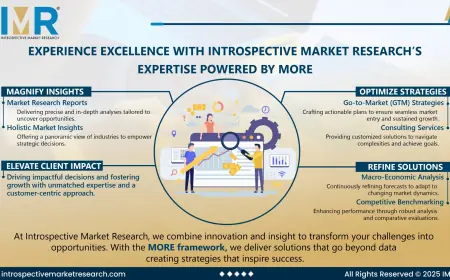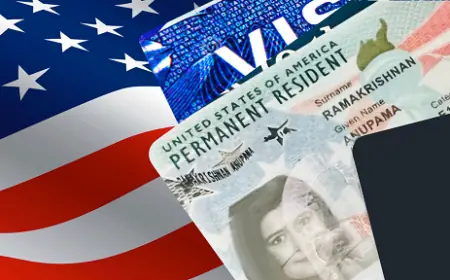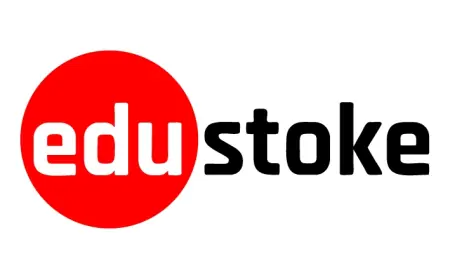Comprehensive Study of India Consumer Finance Market 2031
One of the primary drivers of the India Consumer Finance Market is the country's rapid urbanization and the concurrent expansion of the middle-class population.

Introduction
The India Consumer Finance Market is undergoing an unprecedented transformation, reflecting the broader shifts in the nation’s economic landscape, demographic structure, and digital adoption. With the market valued at USD 59.50 billion in 2025 and expected to reach USD 210.03 billion by 2031, growing at a CAGR of 23.45%, the sector is on a high-growth trajectory.
This growth is not merely a reflection of consumer demand—it is the outcome of multiple converging forces: rapid urbanization, a burgeoning middle class, expanding digital payment infrastructure, and government-led initiatives for financial inclusion. Consumer finance is now more than a convenience; it has become an enabler of aspirations, allowing millions of Indians to access products and services ranging from personal loans and credit cards to home and auto financing.
At the same time, fintech integration, advanced analytics, and mobile-based platforms have redefined consumer interactions with financial institutions, reducing barriers to credit while expanding reach across urban and rural India. Yet, alongside opportunities, the sector faces challenges like regulatory complexities, credit risk management, and economic volatility—making adaptability and innovation essential.
This analysis explores the market’s present dynamics, emerging trends, key drivers, competitive landscape, and future outlook, providing a deep dive into what lies ahead for India’s consumer finance ecosystem.
Market Drivers
1. Expanding Middle Class and Rising Incomes
The biggest growth engine of India’s consumer finance market is the expanding middle class, characterized by rising disposable incomes and higher aspirations. With more Indians able to afford modern lifestyles, demand for financial products such as personal loans, auto loans, and retail financing has surged. Families once dependent solely on savings now actively seek financing to access housing, education, and consumer goods.
2. Digital Transformation and Fintech Integration
The ubiquity of smartphones and affordable internet has transformed consumer finance into a digitally-driven market. Mobile apps, online lending platforms, peer-to-peer (P2P) lending, and digital wallets have redefined consumer engagement. Fintech firms are using AI, machine learning, and big data analytics to assess creditworthiness quickly and efficiently, bringing underserved populations into the formal financial system.
3. Government Push for Financial Inclusion
Government initiatives such as Pradhan Mantri Jan Dhan Yojana (PMJDY) and Digital India have created a robust foundation for financial inclusion. Millions of previously unbanked individuals now hold debit cards and access digital payment systems. This has widened the customer base for both traditional banks and fintech players, fostering financial literacy and expanding formal credit penetration.
4. Lifestyle Aspirations and Consumerism
India’s young and aspirational population is fueling consumerism at an unprecedented scale. Millennials and Gen Z prefer buy now, pay later (BNPL) schemes, credit cards with rewards, and instant loan approvals over traditional savings-based consumption. Consumer finance, thus, acts as the backbone of India’s consumption-driven economy.
5. Rising Credit Penetration in Rural and Semi-Urban Areas
While metro cities remain strongholds, the next wave of growth is expected from tier-2 and tier-3 cities. Improved banking infrastructure, mobile payment systems, and localized financial products are driving credit adoption in smaller towns, opening up vast untapped markets.
Download Free Sample Report: https://www.techsciresearch.com/sample-report.aspx?cid=3205
Emerging Trends in India’s Consumer Finance Market
1. Rise of Unsecured Lending
Unsecured loans—personal loans, digital credit lines, and credit cards—are growing rapidly as consumers increasingly seek instant, collateral-free financing. This trend is particularly strong among salaried individuals and self-employed professionals seeking convenience and speed.
2. Buy Now, Pay Later (BNPL) Boom
BNPL has emerged as a powerful trend in India, driven by e-commerce and fintech. Consumers, especially young adults, prefer micro-credit options for everyday purchases, making BNPL one of the fastest-growing subsegments in consumer finance.
3. Fintech and Bank Collaborations
Traditional banks and fintech startups are entering into strategic partnerships, combining the trust and regulatory compliance of banks with the agility and innovation of fintechs. These collaborations are leading to more customer-centric solutions, from personalized loan offerings to AI-powered fraud detection.
4. Focus on Responsible and Sustainable Finance
Sustainability is becoming central to the financial ecosystem. Institutions are designing green loans and eco-friendly financing solutions, catering to consumers’ growing environmental consciousness.
5. Credit Scoring Innovations
Beyond traditional CIBIL scores, fintech firms are using alternative data sources—like utility bill payments, mobile usage, and social media behavior—to assess creditworthiness, making finance accessible to those previously excluded from formal credit.
6. Contactless and NFC Payments
The adoption of contactless debit and credit cards and NFC-enabled mobile wallets has risen sharply post-pandemic, driven by convenience and hygiene concerns.
Industry Key Highlights
- The India Consumer Finance Market is projected to grow at a 23.45% CAGR between 2025 and 2031.
- Unsecured loans are the fastest-growing segment, fueled by rising digital adoption.
- The western region (Maharashtra, Gujarat, Rajasthan) is the fastest-growing geography, owing to high urbanization and strong financial infrastructure.
- Digital lending platforms and BNPL services are reshaping consumer credit access, particularly for younger demographics.
- The sector benefits from government initiatives such as PMJDY and UPI (Unified Payments Interface), expanding digital transactions nationwide.
- Rising cybersecurity concerns and fraud risks present significant challenges to digital finance adoption.
- Increasing focus on financial literacy and consumer awareness is bridging the gap between urban and rural adoption rates.
Regional Insights
- Western India: Fastest-growing region, driven by strong industrial bases and urban consumer demand.
- Southern India: High adoption of fintech solutions and digital wallets due to tech-savvy populations.
- Northern India: Rising middle-class consumption, especially in states like Delhi and Uttar Pradesh.
- Eastern India: Relatively slower adoption but poised for growth with digital inclusion drives.
Competitive Analysis
The India consumer finance market is intensely competitive, with traditional financial institutions, NBFCs (Non-Banking Financial Companies), and fintech firms vying for market share.
Key Players:
- Bajaj Capital Limited
- Birla Global Finance Limited
- Housing Development Finance Corporation (HDFC)
- ICICI Group
- LIC Finance Limited
- L&T Finance Limited
- Mahindra & Mahindra Financial Services Limited
- Muthoot Finance Ltd
- Cholamandalam
- Tata Capital Financial Services Ltd
Competitive Strategies:
- Digital Transformation – Banks and NBFCs are upgrading apps, customer portals, and digital interfaces.
- Product Diversification – Launch of co-branded cards, BNPL services, and instant loan products.
- Customer-Centric Models – Focus on rewards programs, personalized credit limits, and loyalty benefits.
- Strategic Partnerships – Collaborations between banks and fintech startups to reach underserved markets.
- Focus on Rural Penetration – Localized products and micro-credit offerings targeted at semi-urban consumers.
Future Outlook
The outlook for India’s consumer finance market is highly optimistic. With a CAGR of 23.45%, the market is set to more than triple in size by 2031. Several factors will shape this trajectory:
- Digital-first consumer behavior will accelerate, making mobile-based financing the norm.
- BNPL and micro-credit solutions will expand, especially among younger demographics.
- Rural and semi-urban adoption will rise significantly as infrastructure strengthens.
- Data-driven decision-making using AI and big data will revolutionize credit scoring and loan disbursement.
- Financial literacy campaigns will play a crucial role in responsible credit adoption.
- Cybersecurity and fraud prevention will remain top priorities for institutions.
By 2031, India’s consumer finance sector will be a blend of traditional banking strength and fintech innovation, positioning the country as one of the world’s fastest-growing consumer finance markets.
10 Benefits of the Research Report
- Provides accurate market size and growth forecasts up to 2031.
- Identifies emerging trends such as BNPL, unsecured loans, and fintech partnerships.
- Offers comprehensive segmentation analysis by type, region, and company.
- Highlights regional growth hotspots, enabling targeted investments.
- Analyzes competitive landscape, strategies, and key players.
- Assesses market drivers and challenges, including digital adoption and regulatory issues.
- Explores consumer behavior patterns and financial product adoption.
- Delivers insights into government policies and their impact on financial inclusion.
- Provides data-backed projections to support strategic decision-making.
- Offers customization options, ensuring relevance to specific business needs.
Conclusion
The India Consumer Finance Market is at the cusp of extraordinary growth, powered by an expanding middle class, technological advancements, and proactive government initiatives. While challenges like economic volatility and cybersecurity risks remain, the resilience and adaptability of the sector promise sustained expansion.
As fintech and traditional banking converge, the industry will continue to innovate, offering diverse solutions that align with the evolving financial aspirations of Indian consumers. By 2031, the market will not only be larger but also more inclusive, digital-first, and consumer-centric, cementing its role as a cornerstone of India’s economic progress.
Contact Us-
Mr. Ken Mathews
708 Third Avenue,
Manhattan, NY,
New York – 10017
Tel: +1-646-360-1656
Email: [email protected]
Website: www.techsciresearch.com
What's Your Reaction?
 Like
0
Like
0
 Dislike
0
Dislike
0
 Love
0
Love
0
 Funny
0
Funny
0
 Angry
0
Angry
0
 Sad
0
Sad
0
 Wow
0
Wow
0

























































